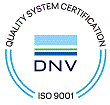
FT-IR is an infrared analysis that give critical information on the status of the oil, and the system containing it. A reference oil of the exact same type as the oil sample is require to have this analysis completed. This analysis will provide values for
- Soot contents
- Oxidation
- Nitration
- Sulfur products
- Water
- Glykols
- Anti-wear
- Ester breakdown
- Diesel / Petrol contents
SOOT
Incomplete combustion of the fuel will produce soot particles. Due to their small size these particles will not be filtered out and therefore remain in the oil. The amount of soot will continue to increase to an unacceptable level depending on engine type and oils. Acceptable amount of soot depends on many factors as the engine’s construction, fuel type and operating conditions. High levels of soot can indicate incomplete combustion due to incorrect fuel/air ratio, clogged filters or prolonged oil change intervals. An oil that have high amount of soot is thick and lubricates poorly.Soot deposits are caused by:
- Valve adjustment
- Injectors
- Turbo and air filtering
- Usage patterns – acceleration and deceleration – breaking
- The capabilities of the additives used
OXIDATION
When oil is exposed to oxygen at high temperatures oxidation will occur. Oxidation will lead to the creation of carboxylic components, including carboxylic acids. Carboxylic acids lead to changes in the oils acid level, deplete the additives in the oil and is a contributing case to corrosion. Oxidation can also increase the viscosity of the oil. The level of oxidation is a good indicator of oil degrading. Rapid increase of the oxidation can indicate high engine temperatures, or deplete of anti-oxidants additives due to prolonged oil change intervals. Oxidation makes the oil thick and reduces its lubricating capability. This can eventually lead to piston ring failure and deposits on pistons. Oxidation is influenced by:- High temperature
- Availability of air
- Catalytics like antifreeze and copper
NITRATION
Nitrogen oxides are created by oxidation of atmospheric nitrogen during combustion, and react with the oil. Nitration causes increased viscosity of oils, can change the surface structure of engine parts, and prevent the oil film adhesion to the surface. High nitration levels can indicate:- Incorrect fuel/air ratio
- Incorrect ignition timing
- High engine loads
- Low running temperatures
- Piston ring blow-trough.
SULFOR PRODUCTS
Sulfur dioxide is created during combustion of sulfur components found in the fuel. These oxides react with water, which is also produced by the combustion, and forms sulfur acid. The sulfur acid is further neutralized by additives in the oil, and create non-organic sulfates. A rapid increase can indicate use of fuel with high contents of sulfur, too much cooling or depleted additives. Increased corrosion will result. Sulfur based corrosion are influenced by:- Sulfur content of fuel
- Operating condition- Low running temperatures
- Additives capability to neutralize sulfurs
WATER AND GLYCOL
The presence of water and glycol is an indication of leaking colling system. An early detection of this problem is important in order to avoid costly breakdown. The presence of water alone, does not necessarily indicate coolant problems, but can also be caused by condensation.ANTIWEAR
The most widespread antiwear additive is ZDDP (zink-dithio-dialkyl-phosphate). Zink and phosphorus are components of ZDDP used in hydraulic oils, engine oils and gear oils. These additives are broken down as the oil is used, and consumption of these additives accelerate in the presence of water, and a rapid decline can indicate excessive loads or water contamination.ESTER BREAKDOWN
Synthetic lubricants usually contains a large amount of synthetic polyol esters. These are broken down in the presence of water and acids, and increase the acidity. The breakdown of esters can indicate presence of water from condensation due to low running temperatures or leaks in the cooling system.DIESEL / PETROL contents
The contents of diesel/petrol in the oil does not entirely depend on contamination, but also on the content of aromatic hydrocarbons in the fuel. As the amount of these carbons vary by physical location and time of year, it is important to calibrate the test based on the exact fuel type used. Customers are encouraged to include a fuel sample with the oil sample. The presence of fuel in the oil can indicate a leakage, problems with combustion, clogged filters, prolonged oil change intervals or ignition problems.NS-EN ISO 9001:2015
certified by DNV
©Norsk Oljelaboratorium AS